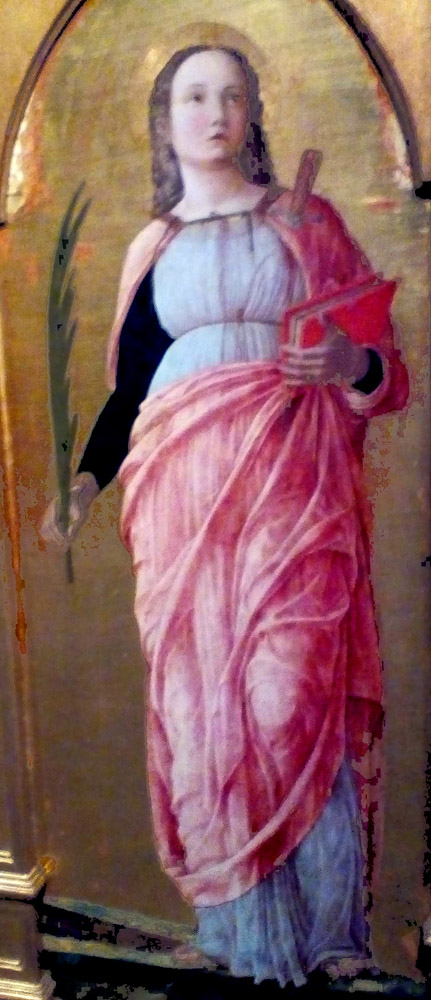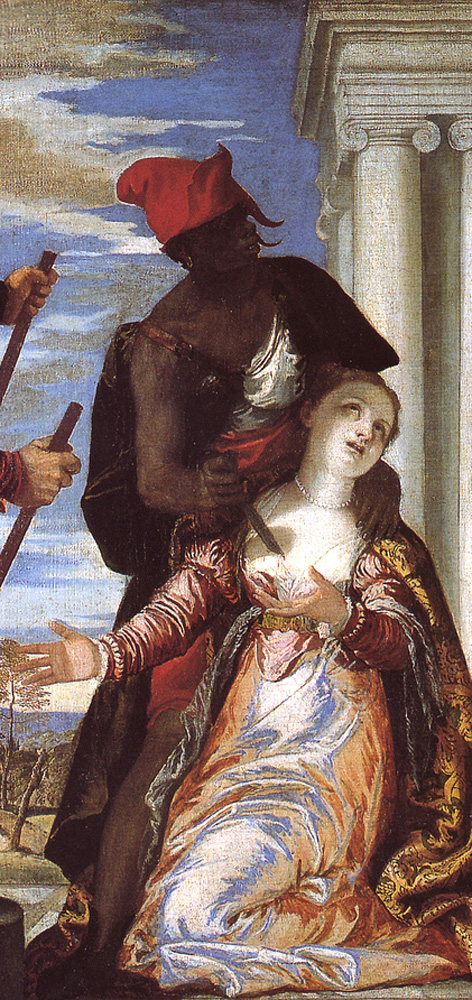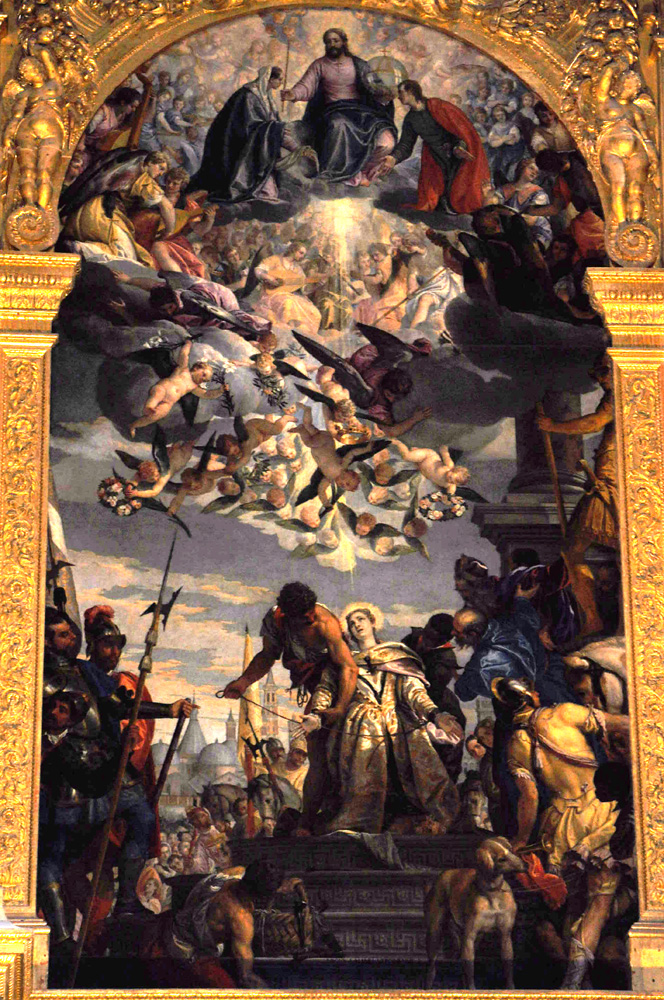In the Christian era the Field of Mars became the Prato del Valle, with the Abbey of St. Justina rising at its edge.
The saint was well known in late antiquity. In the 6th century the Paduans dedicated a church to her and she is portrayed among the virgin martyrs in the presbytery arch in the Euphrasian Basilica and in the procession of virgins in Sant'Apollinare Nuovo. In the 7th century, Venantius Fortunatus, writing in Gaul, urged travelers to Padua to visit her relics there.1
In the Middle Ages, she continued to be a favorite subject of portraits and narrative images in Padua and the rest of northern Italy. In the Abbey her martyrdom is the subject of the stunning 1576 painting over the high altar (third picture at right) and the 21st-century reliefs on the main door:
 Click or press to see the description page for this picture
Click or press to see the description page for this picture
St. Justina's feast day, October 7, happens to be the date of the Battle of Lepanto, in which the Turkish navy was decisively defeated by a "Holy League" comprising the forces of Spain, Venice, and most of Italy. In honor of her presumed intercession on behalf of the League, she is the central figure in this panel painted a few years after the battle.
At times the images seem to confuse this St. Justina with the Justina who was martyred in the third century in Antioch (example).
Prepared in 2017 by Richard Stracke, Emeritus Professor of English, Augusta University. Revised 2020-07-21.

St. Justina's portrait in Mantegna's San Luca Altarpiece. (See the description page.)

Center section of Veronese's 1573 Martyrdom of St. Justina. The marble bridge is in the background. (See the description page.)

Another Veronese on the same subject, from 1576. Behind the saint and her executioners is the ground where her church will be built, and behind that the artist has painted the contemporary Basilica of St. Anthony. (See the description page.)
ATTRIBUTES
- Prosdocimus: A ewer
- Justina: A short sword, usually shown plunged into her breast
MORE IMAGES
- 14th century: The martyrdom of St. Justina in a stained-glass window in Regensburg Cathedral.
DATES
- Feast day: October 7
BIOGRAPHY
- Acta Sanctorum, October vol. 3, 790-826.
- Prudentius, Peristephanon, Carmen XIII (Passio Cypriani).
- Carolus de Smedt, Josephus de Backer, Franciscus van Ortroy, Josephus van den Gheyn, edd., "Passio S. Iustinae, Virginis et Martyris, Patavii in Italia," Analecta Bollandiana, X, 467-488.
ALSO SEE